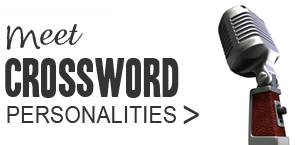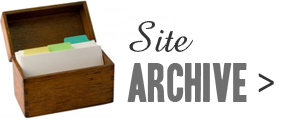| This NYT Wordplay article Yes, You Can Write More Than One Letter in a Square and an ensuing twitter discussion got me to discover some fascinating grid-fill gimmicks used in advanced cryptics. One such is to set aside the one-letter-per-cell norm that we take as a given in blocked grid puzzles. The word or group of letters that goes inside a single cell is called a "rebus". [Long ago, rebuses were probably "squashwords" – more on that later in the article.] If the idea of many-letters-per-cell is new to you, then you're probably brimming with questions at this point. When did this trick originate? How does the setter go about crafting a puzzle with rebuses? What should the solver do to crack such a puzzle? Cryptic setter eXternal (Steve Bartlett) offers us insights into these questions. In this article, he looks at the history and development of puzzles in which individual cells contain more than one letter, and supplements his research with rare images of decades-old puzzles. Steve sets advanced puzzles in the series of The Listener, Inquisitor and Enigmatic Variations. In addition, he sets standard cryptic puzzles for The Daily Telegraph (as proXimal), The Independent (as eXternal), Financial Times (as ARTEXLEN), The Herald (as Boz) and The National (as Claymore). Note: The article primarily uses Listener examples, for consistency and because it has the longest history of the barred series. Over to you, Steve. - Shuchi |
Many Letters in a Square: Dive into History
1. Listener (1950): #1047 Space Saver by Babs
Compressed repetitions; LILO = LI/O
Here is a Listener crossword and solution from 1950, one of the oldest-known crosswords to employ the many-letters-per-square trick.

[click #1047 to enlarge]
The preamble of the puzzle states that only half the number of squares is to be used for each answer, hence an answer of four letters has a light containing only two squares.
For example, the answer to 1 Across:
Refuse the odd bits (8)
is RIFF-RAFF. This to be entered in four cells as R,I/A,F,F, with the I and A sharing the same cell, divided with a slash.
This crosses with 2 Down:
Disinfectant used to make Eliza ladylike (4)
in which the answer IZAL is hidden in 'Eliza ladylike' and entered as I/A,Z/L, using just two cells for the entry.
The preamble gives several examples of how the answers should be entered, to help the solver understand this unusual entry method.
2. Listener (1951): #1118 One or Two. by Stephanus
Random distribution: one letter in a cell or two
A Listener crossword from the following year, 1951, uses a simpler concept. A short preamble merely states that a 'space' contains either one or two letters.
[click #1118 to enlarge]
For example, the answer to 5 Across:
Post of Prometheus' hope - and fateful pain? (8)
DELIVERY is entered as DE/LI/V/E/R/Y, in six squares.
This crosses with 6 Down:
What's put the L in AIR? A tree, at least (6)
in which the answer LINDEN (L in DEN) is entered as LI/N/DE/N in four squares.
Interestingly, the solution notes allow an alternative, as the V of DELIVERY and N of LINDEN are unchecked, meaning that DE/L/IV/E/R/Y and L/IN/D/E/N would be equally valid. We seldom see such ambiguities in today's barred crosswords.
3. Listener (1961): #1640 Three-in-hand by ffancy
Alphabetical sum
This example hails from a decade later, 1961. The puzzle has a complicated preamble to explain that each square accommodates three letters. This puzzle uses a gimmick commonly seen in modern barred puzzles, where Across and Down answers clash. Cell entries are derived from the letters of clashing Across and Down answers and the alphabetical sum of these two letters.
[click #1640 to enlarge]
For example, 1 Across CRACKER clashes with 1 Down KILDERKIN in the first cell. K and C are written in corners of this cell, with the sum C(3)+K(11)=N(14) in the centre.
A further point to note is that, unlike the previous examples, the 1961 puzzle is thematic. The solution leads to a quote on diagonals from cell 11 — PLEASE TO REMEMBER THE FIFTH OF NOVEMBER etc., using the central cell entries derived from the clashing letters.
So far, the examples have not attempted to coin a term for this particular genre. They merely describe in the preamble what needs to be done to solve and fill the grid.
4. The (Almost) Impossible Crossword Book (1984)
The name’s Squashword
The next example is from Gyles Brandreth's The (Almost) Impossible Crossword Book (1984), with the actual puzzle probably dating much earlier.
Beside the title, appears the line, 'Shared Squares is a squashword'. This might lead us to believe that there was once such a term in usage for puzzles where squares contain more than one letter.
5. Listener (1998): #3479 Belt Up by MynoT
Symbols for Clashes
The next example is from 1998, after The Listener crossword had moved to its current home in The Times.
[click #3479 to enlarge]
Here the clashes are generated using more than one letter contributed from crossing answers. This is typical of modern barred thematics, with the clashes resulting in a thematic word.
For example, the clue to 9 Across is:
Car's before them to perform — by the grace of god (4) DODGEM
DO + DG(Dei gratia) + 'EM
The clue to 4 Down is:
Note's small money (3) MINIM
MINI + M
Both answers are too long for the available space (6 letters for 4 cells; 5 letters for 3 cells) and clash in the crossing cell, with the clash of GEM from DOD/GEM and INI from M/INI/M to give GEMINI, entered as the sign of the zodiac.
Aside from the entry lengths (rather than answer lengths) being given, we can also note that there is no reference to clashes in the very short preamble. The solver must deduce the fact that some answer are overlong and therefore clash.
6. Listener (2002): #3673 Journey by Gioconda
Abbreviations for Clashes
The final example comes from 2002 and has four entries sometimes clashing in one cell. As opposed to the previous example, answer lengths rather than entry lengths are provided.
[click #3673 to enlarge]
In this puzzle, 2 Across has four clues but only two lights. The solver can thus deduce that the first two clues will clash somewhere in the first light and the second pair will clash somewhere in the second light.
The first light of 2 Across is made up of 6 cells, but the answers to the first two clues have lengths of 5 and 7 = 12. Therefore, there will be a clash of 7 letters in one cell along that light.
The first two clues of 2 Across are:
Endless joke about half clad women (5) JADES
JES{t} around AD
Amount of water in pool crushed a dog-pen (7) PONDAGE
A DOGPEN*
Therefore, we have JADESPONDAGE to enter in the first light of 2 Across. We can see that DESPOND is a likely 7-letter candidate to be the clash in the third cell.
Then, we look at the Down clues on the column where the large clash from 2 Across occurs, ie column E. The first two clues in column E have answer lengths of 3 and 8 = 11, but a light length of only 4. Therefore, a clash of 8 letters will occur. The first two clues of column E are:
Court Henry with soft centre (3) HOF
H+{s}OF{t}
Cast off sledge bearing frightened Hugo (8) SLOUGHED
SL(HUGO*)ED
Therefore, we have HOFSLOUGHED to enter in the first down light in column E. The clash occurs in the second cell down, the same location as the clash in the across light, providing OFSLOUGH as the contribution to the clash. This is how the solver arrives at SLOUGH OF DESPOND, to be abbreviated as SOD as instructed by the preamble.
Clashes from multiple entries form places visited by Christian in The Pilgrim's Progress.
This is only a tiny overview of the multitude of ways in which setters have used this gimmick over the past 70 or more years. The puzzles where clashes of more than one letter spell out thematic words or names are particularly common and are often used to set the theme in advance of a further endgame which needs resolving.
Tips for many-letters-per-cell setters
In addition to the generic dos and don'ts of cryptic setting, be mindful of the following points when creating a crossword with more than one letter per cell.
1. Keep an eye on checking
Remember that overlong entry clashes reduce the amount of checking in the puzzle. It is more helpful to the solver if you minimise the proportion of the answer which clashes, or apply some technique to offset the effects of reduced checking.
As an example, take a theme of Santa's reindeer to be produced by clashing answers. When deciding how to generate DANCER, a nice 50/50 split of DAN/CER could be achieved with DAN/GEROUSLY and NECROMAN/CER (~27% clashing). The solver will have more help with checking from cells already populated than using, say, DAN/DY and UL/CER (~60% clashing).
You can also offset the effects of reduced checking by offering easier clues for those answers that might otherwise be troublesome for the solver – for example, through whole anagrams or hidden words.
2. Decide: Answer lengths or number of squares?
When setting many-letters-per-cell puzzle, you have a decision to make about clue enumeration: should you give the lengths of answers or the number of squares available for each entry?
If answer lengths are given, the solver has more guidance as to which answers are likely to clash. For example, in the clashing entries for DANCER to appear (see above), the number of cells needed to enter NECROMAN/CER will be 9, but the answer length is 11. Hence if the setter decides to give the answer length (11), the solver knows this is a clashing entry, as the number of available cells is fewer than the answer length.
It is a lot more common to provide entry lengths (ie number of available cells), so that the solver has to work out which are the gimmick clues.
3. Represent the clashes elegantly
Finally, you also need to decide how the clashes are to be represented in the grid. It is a little inelegant and fiddly to expect the solver to enter a seven-letter word, say, in a single cell.
Solutions to the problem could be for the solver to insert a symbol, abbreviation, first letter of answer or to leave the cell blank.
The method should ideally fit with the theme of the puzzle.
Tips for many-letters-per-cell solvers
From the solver's point of view, the more quickly the theme is uncovered, the easier the solve becomes. So you should be on the lookout for:
- answers which obviously extend for longer than the given number of cells
- likely crossing clues which could create a clash
Sometimes only a couple of clashes are needed to get an idea of what the theme might be. Once you have zeroed in on the theme, you can consider the identities of the other thematic items which might be hidden in clashes.
My thanks to Dave Hennings, Roger Phillips and John Tozer for their help in the research for this article.
– Steve Bartlett
| A follow up article will talk about using crossword software to make puzzles with multiple letters per cell. Stay tuned! Update (25-Apr-2019): The follow-up article: Crossword Software to Make Puzzles with Many Letters per Cell. - Shuchi |
Related Posts:
- Writing easy clues is not easy: a behind-the-scenes report ~ Dean Mayer (Anax)
- Clueing really long solutions in a crossword ~ Gordon Holt (Otterden)
- Alphabet Jigsaw Puzzles ~ Bhavan (Buzzer)
If you wish to keep track of further articles on Crossword Unclued, you can subscribe to it in a reader via RSS Feed. You can also subscribe by email and have articles delivered to your inbox, or follow me on twitter to get notified of new links.




















 Follow on Twitter
Follow on Twitter Join us on Facebook
Join us on Facebook Get RSS
Get RSS

0 comments
Post a Comment